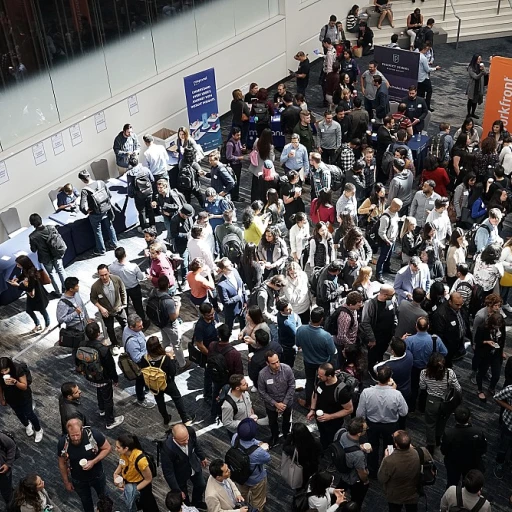
Understanding HRIS: A Game Changer for Employee Management
Revolutionizing Employee Management with HRIS
In the realm of human resources, the Human Resource Information System (HRIS) stands as a pivotal tool in transforming how businesses handle employee-related tasks. At its core, HRIS integrates crucial HR functions into one seamless platform, offering businesses a comprehensive view of their workforce. This modern approach to employee management is proving to be a game changer by allowing HR departments to work smarter, not harder. A key advantage of HRIS is its ability to centralize employee data. This centralization not only simplifies data management but also improves data accuracy and accessibility. With all employee information stored in one location, HR professionals can quickly access and update records, track performance, and manage compliance requirements, ultimately saving time and reducing the likelihood of errors. As enterprises grow, the demands on HR teams also increase. Manually managing employee information and processes can become cumbersome and prone to errors. By adopting an HRIS, businesses can automate and streamline these processes, resulting in better decision-making and freed-up resources that can be redirected to strategic tasks that drive company growth. Furthermore, an HRIS offers significant benefits by enhancing communication within the organization. By facilitating better interaction between managers and employees, HRIS encourages more robust engagement and promotes a positive work environment, which is crucial for employee retention and satisfaction. HRIS systems come equipped with analytics and reporting tools that provide critical insights into workforce trends and metrics. By analyzing these insights, businesses can make data-driven decisions to improve employee management and drive continuous improvement. In relation to payroll and benefits, the integration of an HRIS can drastically reduce the burden on HR teams, allowing them to manage compensation, benefits, and other crucial aspects more efficiently. Moreover, the impact of cloud-based solutions is redefining human capital management by offering flexible and scalable options that cater to the growing needs of businesses across various industries. By tapping into the power of an HRIS, companies are not only optimizing their HR functions but also ensuring their workforce is managed efficiently, paving the way for increased productivity across the board. As we continue to explore other facets of HRIS, from time tracking to real-world applications, it's clear that the potential of HRIS is vast and impactful for businesses of all sizes.The Role of Time Tracking in Boosting Productivity
The Essential Collaboration Between Time Tracking and Enhanced Productivity
Efficient time management is the cornerstone of any productive workplace. As businesses seek new avenues to improve their operational productivity, time tracking has emerged as an invaluable tool within the HR Information System (HRIS) framework. By enabling precise measurement of time spent on various tasks, businesses can assess resource allocation and streamline processes. Time tracking empowers managers and employees alike to gain insights into daily, weekly, and monthly time expenditures. This visibility into how time is utilized across projects allows for data-driven decisions that can boost productivity in the long run. Moreover, modern HRIS platforms often come equipped with advanced time tracking features, making it increasingly easier to monitor employee activities and ensure that work hours are aligned with company goals. As employees begin to see where their time is going, they become more conscious of task prioritization and better manage their workload. This awareness ultimately leads to more focused and productive teams, driving the entire organization toward their objectives. The synergy between HRIS and time tracking also fosters accountability. By recording and reviewing time logs, employees can reflect on their productivity levels and make necessary adjustments to optimize their performance. Furthermore, real-time tracking features reduce discrepancies in tracking work hours, attendance, and leave management, thus ensuring that payroll processes are fair and accurate. In addition, the integration of HRIS with time tracking can support talent acquisition strategies. Accurate time tracking data serves as a foundation for workforce planning, opening avenues for identifying skill gaps and determining capacity to take on new projects. Interested in learning more about how HRIS transforms hiring processes? Explore our insights on optimizing recruitment with HRIS. In conclusion, the role of time tracking in tandem with HRIS goes beyond simply monitoring hours; it is about maximizing productivity, enhancing employee experience, and ultimately translating efficient time management into organizational success.Integrating HRIS with Payroll and Benefits Administration
Simplifying Compensation Management
The integration of Human Resource Information Systems (HRIS) with payroll and benefits administration is a transformative step for organizations looking to streamline operational efficiency and precision in managing their workforce. Merging these systems into a cohesive unit allows for the seamless flow of data, ensuring that payroll processes are automated, accurate, and timely. By utilizing an HRIS that is integrated with payroll, businesses can eliminate the risk of errors commonly associated with manual data entry. This synergy helps in maintaining accurate employee records, which form the backbone of effective compensation management. Moreover, payroll integration allows HR teams to automatically update any changes in employee status or benefits, making the process quicker and more reliable. This integration not only enhances accuracy but also reduces the administrative burden on HR personnel, allowing them to focus on more strategic tasks that contribute to the growth of the organization. Additionally, having an integrated system can simplify compliance with ever-evolving labor laws and tax regulations, as the software can be programmed to keep up with legislative changes and automatically adjust payroll calculations accordingly. For companies contemplating this shift, exploring modern HRIS solutions for streamlining payroll can be a valuable resource. These solutions can be tailored to meet the unique needs of a business, incorporating features such as direct deposit services, tax filing support, and detailed reporting capabilities. Moreover, integrating HRIS with benefits administration enables organizations to manage employee benefits more effectively, ensuring that employees receive timely updates about their entitlements. This streamlined process not only improves overall employee satisfaction but also helps in retaining talent by providing transparent and accessible benefits information. As emphasized in other sections of this post, by leveraging the right HRIS, businesses can vastly improve their productivity and employee engagement through integrated technology that addresses multiple facets of human capital management.HRIS Systems: Choosing the Right Fit for Your Business
Ensuring Seamless Integration for Optimal Results
Integrating a Human Resources Information System (HRIS) with your company’s payroll and benefits administration is a crucial step in optimizing your business operations. By aligning these systems, businesses achieve a streamlined and efficient way to handle employee data, reducing redundancy and minimizing human error.
An efficient HRIS not only manages core HR functions but also ensures payroll processes are accurate and timely. This alignment helps in maintaining payroll consistency across different platforms, facilitating easier adjustments and reporting. Moreover, integrating HRIS with benefits administration enables companies to offer personalized and automated benefit options, catering to diverse employee needs while reducing administrative burdens.
Customization and Adaptability: Key Considerations
When selecting an HRIS, one must consider the system's ability to adapt to various integration needs. The right system should be flexible enough to connect with both current and future payroll and benefits software, ensuring seamless transitions as your business evolves. This adaptability not only promotes efficiency but also future-proofs your HR infrastructure, offering scalability as your company grows.
While discussing HRIS’s ability to adapt and integrate, it’s essential to refer back to its fundamental role in employee management and productivity enhancement. A cohesive system that marries these functions promotes a unified approach to human capital management, creating a comprehensive ecosystem where data flows smoothly and transparently.







